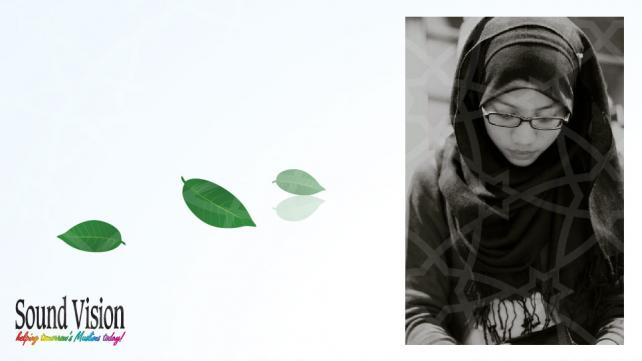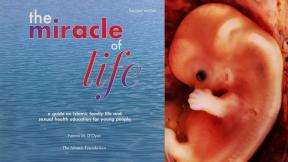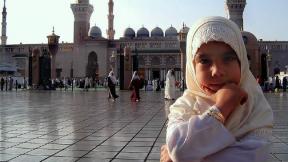
Most of the Muslim world sees America through the eyes of Hollywood movies, which is far from an accurate portrayal of American morality. Nonetheless, there certainly is a big cultural gap in the way people in the West deal with modesty and privacy of the body, and the way individuals in the Muslim world do, regardless of their level of Islamic practice.
This Islamic sensibility of considering the human body of a very personal realm is connected to the concept of honor, dignity and privacy. This is not limited to Muslim countries. In fact, it is found in many Eastern cultures as well, such as in India and China, at a far higher level than in the West.
What is Haya? Haya, Satr, Nikah, and Hijab are four important concepts that help explain Islamic precepts relating to modesty.
Concept of Haya
The concept of Haya is considered a major Islamic virtue and an integral part of human character.
Ask anyone in the Muslim world, Muslim or not, and he or she will know what the Arabic word “Haya” is. But if you ask them to define it, they will be hard pressed to do so. Haya is in the grain of personal and social morality, values and behavior.
There is no exact English word which can convey the whole meaning of the Arabic term Haya. Most people translate it as modesty, shamefulness, and shyness. But all these words have negative connotations, which the word Haya does not have. Haya, unlike shyness and bashfulness, does not indicate that a person lacks self-confidence. In fact, in Islamic history, the person most noted for Haya was the third Khalifa Othman ibn Affan, may God be pleased with him.
A person with Haya is not a shameless person. He or she is chaste, moral, restrained, upright, and virtuous. He or she is not immodest, immoral, indecent, lewd, unabashed, unashamed, unblushing, and unchaste. No, we are not talking about angels here. A Muslim goes up and down in his or her faith and practice, but the ideals of Haya are such.
Prophet Muhammad, peace and blessings be upon him, said that every way of life has its distinct character and for Islam it is Haya (Muwatta). He also said Haya is the fruit of faith. (Bukhari, Muslim).
Haya is not morality to be imposed, but something that must arise from within a people. But at the same time, it is not a private affair. It is an established and accepted social morality which members of society collectively regard as desirable.
A state, therefore, is expected to be the organ through which any society mediates its moral values. This is the reason we find that the Malaysian government asked for the removal of nude scenes from the Hollywood film Schindler's List, for example. It's ironic that many television stations in the Muslim world look for Christian-themed films from America to run on their stations because they feel these come close to the Haya standards of their societies.
Public Haya is also the reason that even in secular Muslim countries you will not find collective shower rooms in school dorms, community gyms, or army barracks where persons of the same gender freely undress and shower in front of each other. I remember choosing not to stay in a dorm in Chicago at a high cost to me because of this common shower area issue.
Haya is the reason many Muslim men and women prefer to be seen and treated by a doctor of the same gender. Haya is also the reason that Muslim men and women avoid situations where they will be alone with a non-related member of the opposite sex.
It is also because of Haya that you will not find the demonstration of public affection between spouses in public. That loving relationship is considered a private joy.
It is due to Haya that while romance is there, even in the secularist-run television stations of the Muslim world, bedroom scenes, explicit language, and sexual innuendo are not part of the shows. Of course, all of that is being challenged by satellite television, which brings the Hollywood version of America to Muslim homes around the world.
While Haya is an expected norm of personal behavior defining social morality, the basic Islamic personal law taught to Muslim children in homes or weekend schools around the world, from the United States to the United Arab Emirates includes the following concepts of Satr, Hijab and Nikah.
The Code of Satr
Satr is another important code to understand. Muslim men and women are asked by Prophet Muhammad, peace and blessings be upon him, to observe Satr. This means Muslims must keep their bodies from the navel to the knees covered in front of others of the same sex. The only exception to this rule is one's spouse.
Satr explains why in the traditional dress of Muslim countries, there is no exposure of the human body. Muslims will go to great lengths to avoid this. In many villages, people have refused to see physicians if they needed to undress for them. This prompted Imams to preach that a Muslim can undress in front of a physician if this is required for treatment.
The Etiquettes of Hijab
"Tell the believing men to lower their gaze and be modest. That is purer for them. Lo! God is aware of what they do..." (Quran 24:30-31)
Due to secular fundamentalists who have banned the "headscarf" in Turkey and France, many people in the world now think Hijab means headscarf. In the fight for the hearts and minds of Muslim women, the headscarf has become a symbol of assertion for Muslim feminists as well as a symbol of women's oppression for most Western feminists. However, the concept of Hijab has a much broader meaning than a piece of cloth on a woman's head.
The etiquettes of Hijab go beyond a dress code. It defines the relationship that men and women in a Muslim society maintain with each other. It lays out the guidelines for interaction between the sexes, particularly those not related to each other by marriage or blood. In essence, it is a set of legal and social norms that define gender relations in the public and private space in the Muslim world.
Even Muslim architecture incorporates the element of Hijab in defining public and private place within one's own home.
The Institution of Nikah
Nikah means marriage in Arabic. This is the only relationship in which an adult man and a woman can see each other's bodies. It is not surprising, therefore, to note that dating still remains unheard of in the Muslim world, despite the practice's introduction through Western television programs in the region.
Extramarital sex is considered a major sin in Islam, and Muslims are encouraged to marry. This is why in several Muslim countries, governments offer a stipend for eligible couples to get married if they cannot afford to.
Of course, there are people who do have affairs in the Muslim world. But this is considered a serious crime against one's family, the community, and a major sin from a spiritual perspective.
The institution of marriage in the Muslim world has been seriously challenged by the cultural imports from the West. However, its strength despite these pressures, prompted former U.S. President Jimmy Carter to note that the only countries in Africa where AIDS has not become an epidemic are Muslim countries.
Conclusions
The concepts of Haya, Satr, Nikah, and Hijab are Islamic values, norms, and etiquettes. Although not all Muslims may live up to these ideals, social morality is still defined by these norms in the Muslim world. And nudity is nothing but the antithesis of Haya, even by those who may not be living by these ideals in the Muslim world.
Breaking these norms is taken extremely seriously in Muslim societies. Many states treat crimes against these norms so seriously that they use capital punishment.
Unlike what some in America lead us to believe, no one hates America in the Muslim world because of democracy and freedom. It is the immorality of America (championed by Hollywood), along with American foreign policy which defines the conflict between the Westernized elite and religious elements in Muslim societies.








Add new comment